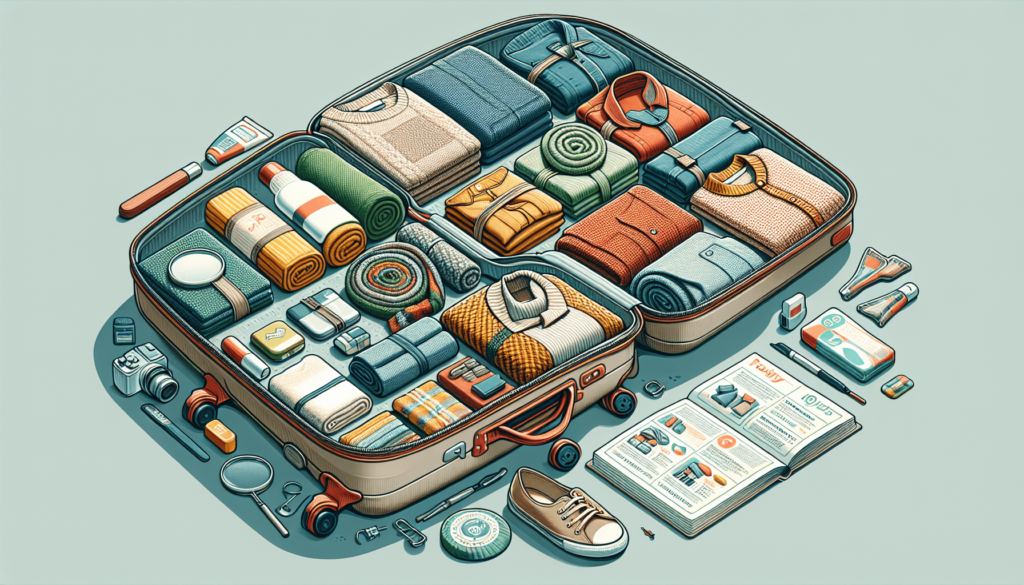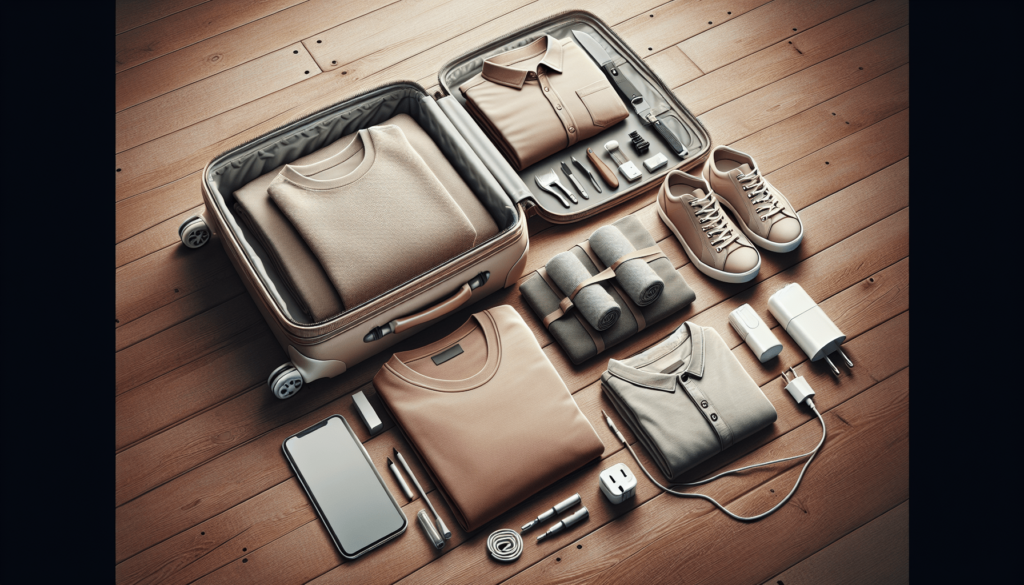Are you ready for your next vacation but dreading the hassle of lugging around heavy suitcases? Look no further! In this article, we will explore the best strategies for packing light and making your travel experience a breeze. From choosing the right luggage to smart packing techniques, we’ve got you covered. Say goodbye to the stress of oversized bags and hello to the freedom of traveling light!
Choose the Right Luggage
When it comes to packing light, choosing the right luggage is essential. Consider the size and weight restrictions of the airlines you’ll be flying with. Each airline has different regulations, so it’s important to check the specific requirements before you start packing. Opting for lightweight and versatile luggage can make a huge difference in the amount of weight you have to carry. Look for bags made from durable but lightweight materials like nylon or polyester. Additionally, choosing luggage with multiple compartments and pockets can help you stay organized throughout your trip.
Plan and Organize
Planning and organizing your packing process can save you a lot of time and stress. Make a packing list of all the items you’ll need for your trip. Having a list ensures that you don’t forget anything important and helps you avoid overpacking. Check the weather forecast for your destination to get an idea of what kind of clothing you’ll need. Researching travel restrictions and cultural norms can also help you pack accordingly. For example, some countries may have specific dress codes or restrictions on certain items, so it’s important to be aware of these before you start packing.

Pack Essential Items Only
When it comes to packing light, sticking to the basics is key. Evaluate the items you want to bring and ask yourself if they’re truly necessary. Pack versatile and multi-purpose items that can be worn with multiple outfits. For example, a neutral-colored sweater can be paired with different bottoms and layered for warmth. Limit your toiletries to the essentials. Consider using travel-sized options or purchasing toiletries once you arrive at your destination to save space in your luggage.
Wear Your Bulkiest Items
To maximize packing space, wear your bulkiest items instead of packing them. Layers and jackets can take up a lot of space in your luggage, so wearing them while traveling can help free up room. Additionally, heavy shoes can add weight to your luggage, so opt to wear them during your journey. Bulky accessories like hats or scarves can also be worn to save packing space and add style to your outfits.

Maximize Packing Space
Making the most of the limited packing space you have is crucial for packing light. Rolling your clothes instead of folding them can save space and help prevent wrinkles. Utilize every inch of space by placing smaller items inside larger ones. For example, you can stuff shoes with socks or other small items to make use of the space inside. Consider investing in compression bags or packing cubes to further maximize your packing space.
Utilize Travel-sized Items
Travel-sized toiletries can be a lifesaver when it comes to packing light. Look for mini versions of your favorite products or transfer them into travel-sized containers. By minimizing the size of your toiletries, you’ll be able to free up more space in your luggage. Another option to consider is using solid toiletries, such as shampoo bars or solid deodorants. These products take up less space and are less likely to leak or spill during your trip.
Choose the Right Fabrics
Opting for the right fabrics can make a huge difference in the weight and versatility of your clothing. Choose lightweight and quick-drying fabrics that are easy to wash and dry while traveling. Fabrics like nylon, polyester, or lightweight cotton blends are great choices. Additionally, look for wrinkle-resistant clothing to avoid the hassle of ironing or steaming your clothes during your trip. Investing in versatile clothing that can be dressed up or down can also help minimize the number of items you need to pack.
Avoid Overpacking
One of the most important strategies for packing light is to avoid overpacking. Stick to your packing list and resist the temptation to add unnecessary items. Before adding something to your luggage, think twice about whether you really need it. Be mindful of the fact that you’ll likely have opportunities to shop or do laundry during your trip, so it’s not necessary to pack your entire wardrobe. Removing unnecessary items before you travel can make a significant difference in the weight and bulkiness of your luggage.
Pack in Outfit Sets
A great way to stay organized and maximize space is to pack your clothes in outfit sets. Plan your outfits ahead of time, taking into account the activities you’ll be doing each day. Pack complete sets of clothing, including all necessary components like tops, bottoms, and accessories. By packing in sets, you’ll have ready-to-wear outfits that eliminate the need to dig through your luggage or bring extra items that you may not even end up wearing. Mix and match the various pieces to create different looks and maximize the versatility of your wardrobe.
Tips for Traveling with Electronics
Traveling with electronics can be a bit tricky when it comes to packing light. To minimize the weight and bulk, bring only essential electronics. Consider if you really need both a laptop and a tablet, or if one will suffice. Consolidate chargers and cords by using cable organizers or ziplock bags to keep them tidy and prevent them from tangling. Additionally, consider lightweight and compact alternatives to your regular electronics. For example, instead of bringing a bulky DSLR camera, you could opt for a high-quality smartphone with a great camera. This way, you’ll be able to capture memorable moments without the added weight and space requirements.

